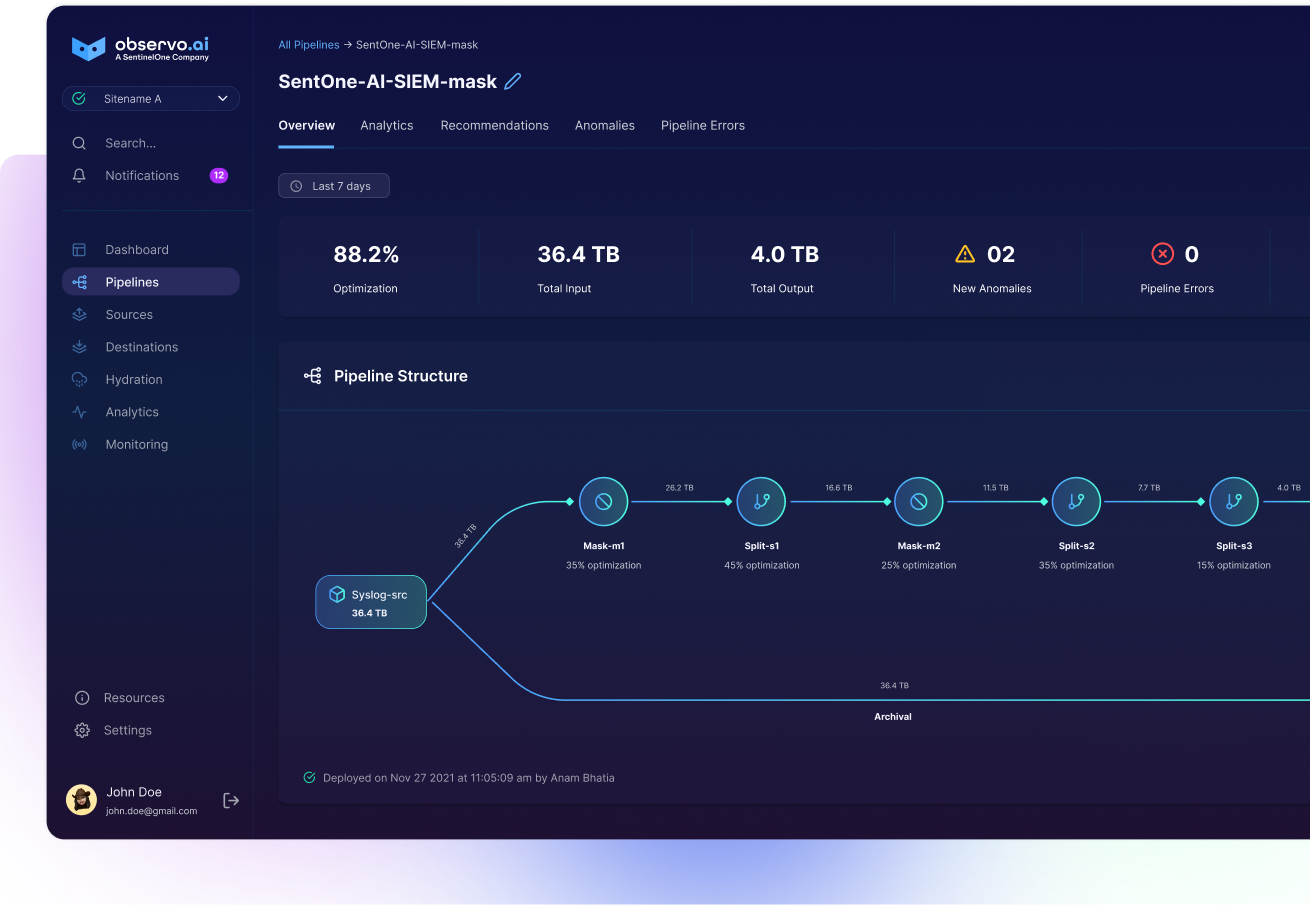Observability 101: The Crucial Role of Firewall and Security Event Log Data in Cybersecurity and Compliance

Introduction
In today's interconnected digital world, where cyber threats are becoming increasingly sophisticated, organizations face mounting challenges in safeguarding their data and ensuring regulatory compliance. Two fundamental components in the arsenal of cybersecurity are firewalls and security event log data. In this comprehensive blog, we will delve into the importance of firewall and security event log data, providing definitions, use cases, challenges, and benefits that highlight their essential roles in enhancing security and maintaining compliance.
Part 1: Understanding Firewall and Security Event Log Data
Firewall: A Sentinel for Network Security
A firewall is a network security device or software that acts as a barrier between an organization's internal network and external networks (such as the Internet). It is designed to monitor, filter, and control incoming and outgoing network traffic based on predetermined security rules and policies. Firewalls serve as the first line of defense against unauthorized access and cyberattacks.
Security Event Log Data: The Digital Trail of Security Incidents
Security event log data refers to the records generated by various systems, devices, and applications within an organization's IT environment. These logs capture information about security-related events, including login attempts, system changes, and network activities. Security event logs are vital for monitoring and investigating potential security incidents.
Part 2: Use Cases of Firewall and Security Event Log Data
1. Intrusion Detection and Prevention
Firewalls are instrumental in detecting and preventing unauthorized access and cyberattacks. By examining network traffic, firewalls can identify suspicious patterns and block malicious activity in real-time. Security event log data generated by firewalls provides organizations with valuable insights into potential security breaches, allowing for immediate action.
Example: A firewall detects repeated failed login attempts from an unknown IP address, triggering an alert. Security event log data reveals the source of the attack, enabling security teams to block the IP address and strengthen login security.
2. Incident Response and Forensics
In the unfortunate event of a security breach, security event logs are crucial for incident response and forensics. These logs provide a detailed timeline of events leading up to and following the breach. Forensic analysis of security event log data helps organizations understand the extent of the attack, identify vulnerabilities, and develop mitigation strategies.
Example: After discovering a data breach, an organization examines security event log data to trace the attacker's activities. The logs reveal the attacker's point of entry, the duration of the breach, and the compromised data, aiding in the investigation and response efforts.
3. Compliance and Auditing
Regulatory frameworks such as GDPR, HIPAA, PCI DSS, and others require organizations to maintain and regularly review security event logs. Firewalls and security event log data play a crucial role in demonstrating compliance with these regulations by providing a record of security measures taken.
Example: A healthcare organization must comply with HIPAA regulations. To meet HIPAA's requirements, the organization ensures that its firewalls are configured to log all network activity, providing a comprehensive audit trail for review during compliance audits.
Part 3: Challenges in Managing Firewall and Security Event Log Data
1. Volume and Complexity
The sheer volume and complexity of log data generated by firewalls and various security devices can overwhelm organizations. Analyzing and correlating data from different sources can be challenging, making it difficult to identify and respond to threats effectively.
Example: A large e-commerce platform generates millions of firewall logs daily. Manually reviewing these logs is impractical, necessitating the use of log management and analysis tools to make sense of the data.
2. False Positives
Security event logs often generate false positives, which are non-threatening events that trigger alarms. Sorting through these false alarms can divert valuable resources and lead to alert fatigue among security teams.
Example: An intrusion detection system might occasionally flag legitimate user behavior as suspicious, such as an employee accessing a sensitive database during non-working hours. These false alarms require careful examination to avoid unnecessary investigations.
3. Data Retention and Storage
Compliance regulations often require organizations to retain log data for extended periods. Managing the storage and retrieval of this data can be resource-intensive and costly.
Example: PCI DSS mandates that organizations store firewall and security event logs for at least one year. Storing and securing this data, especially for larger organizations, can strain IT resources and infrastructure.
Part 4: Benefits of Firewall and Security Event Log Data
1. Early Threat Detection
By monitoring firewall and security event logs, organizations can detect and respond to security incidents in their infancy, reducing the likelihood of a breach. Early detection minimizes the impact of security breaches and allows organizations to take proactive measures to protect their systems and data.
Example: A financial institution notices an unusual spike in outbound traffic from a server during non-business hours. Prompt analysis of security event logs reveals a potential data exfiltration attempt, enabling the organization to thwart the attack before sensitive customer data is compromised.
2. Improved Incident Response
Security event logs provide valuable context and a timeline of events during a security incident. This information is invaluable for incident response teams, enabling them to understand the scope of the attack, identify affected systems, and take immediate remedial actions.
Example: In response to a suspected ransomware attack, security teams rely on security event logs to determine how the malware infiltrated the network, which systems it encrypted, and the extent of data loss. This information guides their response efforts, including isolating affected systems and initiating data recovery procedures.
3. Regulatory Compliance
Maintaining and reviewing firewall and security event logs ensures that organizations remain compliant with industry-specific regulations and standards. Compliance is not only a legal requirement but also a way to reduce legal and financial risks associated with data breaches and non-compliance.
Example: An e-commerce platform stores customer payment card data and must comply with PCI DSS. Regularly reviewing firewall logs and documenting security measures helps the organization demonstrate compliance during PCI audits, avoiding potential fines and reputational damage.
4. Data Analytics
Analyzing security event log data can reveal patterns and trends that can be used to enhance security measures and improve overall network and system performance. By harnessing the insights from log analysis, organizations can proactively identify vulnerabilities and potential threats.
Example: An organization identifies recurring patterns of brute force attacks in security event log data. With this information, they implement stricter password policies and deploy additional security measures, reducing the success rate of such attacks.
Conclusion
In conclusion, firewall and security event log data are indispensable tools in modern cybersecurity. They serve as sentinels guarding against cyber threats and provide crucial insights for compliance and security efforts. While managing and analyzing these logs can present challenges due to their volume and complexity, the benefits far outweigh the difficulties. Using an AI-powered Observability Pipeline like Observo.ai can be a powerful tool in managing the volume and many formats of Firewall Logs.
Organizations that prioritize firewall and security event log data gain a competitive advantage by ensuring the security of their data, minimizing risks, and demonstrating their commitment to regulatory compliance. As cyber threats continue to evolve, the role of firewall and security event log data will only become more critical in safeguarding the digital landscape.
By understanding the importance of these logs and investing in effective log management and analysis solutions, organizations can stay ahead of cyber threats, respond promptly to security incidents, and navigate the complexities of compliance regulations with confidence. Firewall and security event log data are not just records; they are invaluable assets in the ongoing battle to protect digital assets and preserve the trust of customers and stakeholders.




